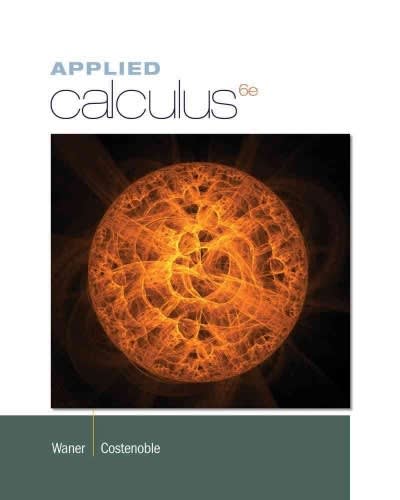Question
Twenty-five people, consisting of a statistics professor and herstudents, are to measure the length of a room to the nearest tenth of a millimeter. Assume
Twenty-five people, consisting of a statistics professor and herstudents, are to measure the length of a room to the nearest tenth of a millimeter. Assume that everyone uses the samewell-calibrated measuringdevice, such as a tape measure. Complete parts a through d below.
a. All 25 measurements are not likely to be exactly thesame; thus, the measurements will contain some sources of error. Are these errors systematic orrandom? Explain.
A.
These errors are systematic. If they wererandom, it would be undeterminable whether the measurements are all too high or too low.
B.
These errors are random. If they weresystematic, there would be a tendency for the measurements to be all too high or all too low.
C.
These errors arerandom, because there is a tendency for the measurements to be all too high or too low.
D.
These errors aresystematic, because it is undeterminable whether the measurements are too high or too low.
b. If the professor wants to minimize the effect of random errors in determining the length of theroom, is it better to report her own personal measurement as the length of the room or to report the average of all 25measurements? Explain.
A.
It is better to use theprofessor's own personal measurement because the random errors in the individual measurements will be multiplied in size 25 times in the average.
B.
It is better to use theprofessor's own personal measurement because she has a more precise tape measure than her students.
C.
It is better to use the average because it is likely to be in error by less than most of the individual measurements and it is more reliable than any single measurement.
D.
It is better to use the average because the average of many measurements is always equal to the true value.
c. Describe any possible sources of systematic errors in the measurement of the room length.
A.
Systematic errors might result if the studentsrush, and do not make the measurements carefully.
B.
Systematic errors might result if the tape measure has a manufacturing defect that made all of the units too small on the tape.
C.
Systematic errors might result if the tape measure is not longenough, and the students need to sum the measurements from the walls to some central point in the room.
D.
Systematic errors might result if thereisn't much light in the room and the professor and students misread the tape measure.
d. Can the process of averaging all 25 measurements help reduce any systematicerrors? Why or whynot?
A.
Yes, because the systematic errors will cancel out in the average.
B.
Yes, because the average of many measurements is always equal to the true value.
C.
No, because measurements that have systematic errors cannot be averaged.
D.
No, because if there is a systematic error in themeasurements, that same error will be present in the average.
Step by Step Solution
There are 3 Steps involved in it
Step: 1

Get Instant Access to Expert-Tailored Solutions
See step-by-step solutions with expert insights and AI powered tools for academic success
Step: 2

Step: 3

Ace Your Homework with AI
Get the answers you need in no time with our AI-driven, step-by-step assistance
Get Started


